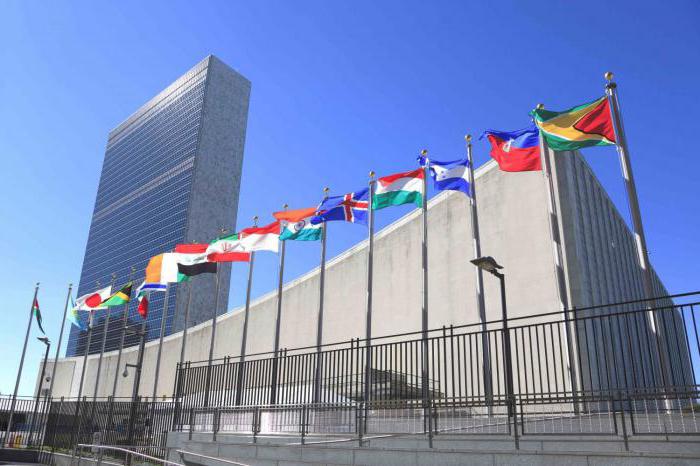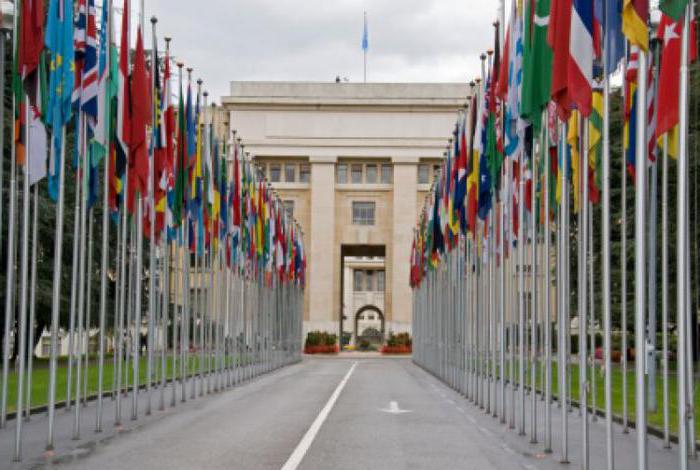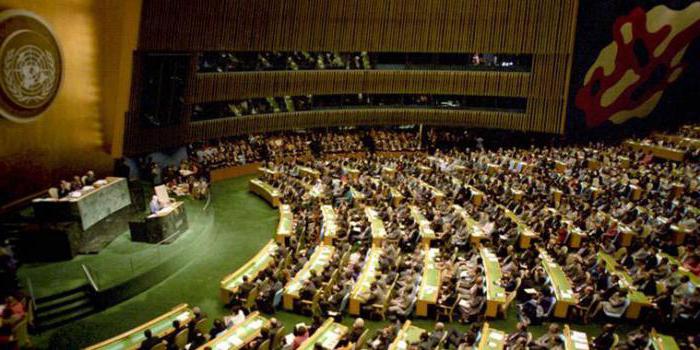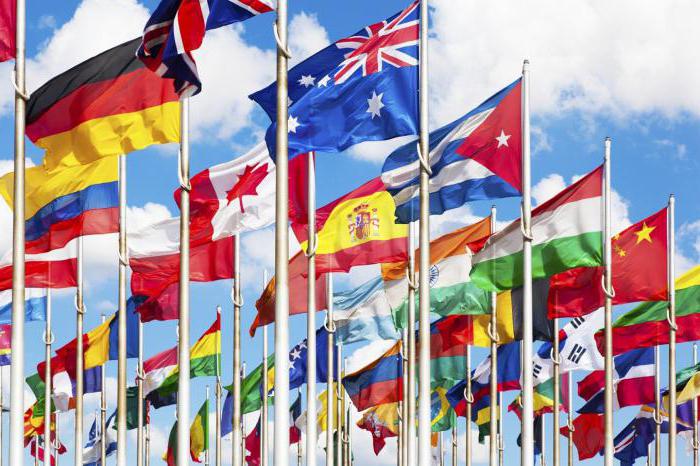Relations with the outside world are extremely important for any open and civilized state. Such relations are regulated by a number of special documents, among which a special place is given to an international agreement. What is this legal source? What features does it have? This article will describe in detail about the concept, types, forms and significance of sources of international law.
The concept of an international treaty
The treaty is the most popular form of political agreement. It can acquire international status if it is between different states. The legal force of the contract depends on what form the agreement takes: for example, it can be a convention, pact, charter, protocol, etc.
All international agreements have a clear goal: this is the joint achievement by countries of certain results on a particular issue. The object of the contract may be any tangible or intangible goods, as well as actions or inaction. As a rule, the object of the agreement is reflected in the name of the received document.
All countries have the ability to conclude contracts. Such legal capacity was enshrined in 1969 under the Vienna Convention - which, by the way, is also an international agreement. According to this document, any state should strive to conclude and achieve certain goals aimed at the development of individual countries or the whole world as a whole.
There are a number of special restrictions in this area. For example, one state cannot encumber a country with obligations without its consent. All norms entered into in international agreements must strictly comply with the provisions of universal law, which prohibits anyone from creating inconvenience or problems.
Source of international law - international treaty
An agreement concluded between different states is a basic source of international law. This is legally enshrined - the UN Charter and the Rules of Court of the UN. That agreement is the most understandable and specific form of conciliatory expression. It is concluded by subjects of interstate legal relations. As a result of the adoption of an international agreement, special rules are established that are predominantly imperative. They relate to the formation, amendment or liquidation of the mutual duties and powers of various legal entities.
In most cases, the rules formed by the interstate agreement are intended for repeated application. Such contracts are called universal. They reflect the interests of all countries and are open to changes. An example of such an agreement is the Charter of the United Nations, the most important source of international law. According to article 103 of this document, any interstate agreement that contradicts the UN Charter cannot have full legal force.
All interstate agreements are the foundation for international law. At the same time, determining the main features of this industry is not so simple. This is a truly enormous legal area, equally significant for all recognized world states. A little more about it should be told further.
International law
Legal relations in which a foreign element is present are combined in the branch of international law. This area is governed by special regulations called interstate agreements.
The legal industry under consideration has some features. Firstly, the international legal sphere is a set of norms and principles that are predominantly imperative. This means that the implementation of all legal principles is enforced. Secondly, international and domestic (national) law have a similar structure. There are industries, institutions, norms and other important elements. Moreover, no national law can contradict international norms and principles.
International law is divided into public, private and supranational. Public law is a system that regulates interstate relations through the adoption of certain decisions by international organizations. Today, the leading international organization is the UN.
Private law governs domestic law complicated by a foreign element. The most common way to apply such a right is to regulate conflict of laws rules (national legal elements complicated by foreign law).
Finally, there is a supranational legal group. In some countries, power delegates part of its authority to international bodies. By concluding international agreements, world organizations take on the responsibility of managing the internal affairs of a single state.
The number of entities entering into an agreement
Lawyers have developed many different classifications of international agreements. So, contracts can be divided depending on the number of legal entities.
The first group of legal acts is called unilateral. In this case, there is only one subject with the right to express his will. It is this subject who imposes a number of powers or duties, for the implementation of which he is fully responsible. The group of unilateral acts includes:
- Notifications. These are documented facts with certain legal consequences. Countries enter into such agreements that impose an obligation to fulfill something (for example, to withdraw or bring in troops, eliminate or indemnify damage, etc.).
- Confession. This is a document representing the fact of consolidating state will. In fact, recognition is a type of agreement that translates the actual situation into a legal one.
- Protest. In this case, one state expresses its disagreement or dissatisfaction on a specific occasion. A similar document is a waiver - an agreement according to which the state waives certain rights. Disclaimer is not valid.
The second group of types of international agreements is bilateral or multilateral. In this case, two or more states come to an agreement on a particular issue. Such contracts can be classified depending on their scope. It should highlight universal agreements. They are concluded by absolutely all states that are members of the world community (for example, the UN or NATO).
What are regional treaties? As is already clear from the name, the agreement occurs between the states of a certain region (for example, Europe, the post-Soviet space, South America, etc.). Here it is necessary to highlight subregional agreements - their participants are countries located within a certain state (or, for example, Euroregion).
Groups of interstate agreements
All international conventions, agreements and treaties are divided into several groups.The level of openness should distinguish between closed and open documents. Closed do not disclose the number of entities that concluded the contract. Open documents provide for the possibility of accession of any state to an emerging or working agreement.
There is also a classification associated with the contracting entity. So, countries can act as subjects as single and indivisible elements. In this case, the concluded agreements will be called interstate. The subjects may also be governments or various executive agencies. For example, medical organizations from different states have concluded an agreement between themselves, which will be called departmental.
According to the form criterion, international agreements, conventions and treaties are divided into written and oral. The latter are extremely rare. A well-known example of an oral agreement is the "gentlemen's agreement" of representatives of the law of the sea, concluded in 1973 at the UN General Assembly.
Finally, interstate agreements are classified according to the object. The purpose of the concluded agreements may be to resolve border, transport, educational, military or any other issues.
Form of international agreement
An international agreement has full legal force only if it is correctly drafted. The first important point is the language of the document. For a long time, all interstate agreements were drawn up in Latin. Later, the official language was French. Today, the agreement has two or more copies, depending on which countries it is concluded between. If the document is unilateral, then it is compiled in English and the corresponding national languages.
The structure of the contract should be consistent with the provisions of the Vienna Convention. The necessary parts are the preamble, the main part and the conclusion. There are no special rules in this case.
The rules of international agreements should reflect the objectives of the creation of the act, legal entities, the introduced rights or obligations, contractual terms and much more. Depending on the prescribed rules, the agreement may take the following forms:
- Treatise. This is a multilateral agreement that establishes the relations of entities in the field of a particular political sphere. The treatise regulates much more serious issues than a treaty. For example, the 1878 Berlin Treaty asserted the independence of a number of European states.
- Contract. This is the most common type of normative act concluded between states. The agreement aims to regulate issues of the economy, culture, politics, etc.
- Pact. This agreement is aimed at resolving a specific issue (for example, the non-aggression pact between countries).
- Declaration. Most often, this is a unilateral document concluded on a specific issue (for example, the 1948 Declaration of Human Rights).
There are also many other documents regulating issues of an international character. All of them have different legal force.
Cooperation agreements
Agreements concluded between countries are in most cases aimed at implementing cooperation. Moreover, interstate cooperation can have very different goals. It is worth noting the development of the educational sphere, cultural, scientific, industrial or any other. There are no specific requirements for international cooperation agreements. The only thing that matters is the correct execution of the document, translation into several languages, as well as ratification by the international community.
Cooperation between different countries should be described on the example of an international customs agreement. An agreement of this kind is concluded on the basis of the 1947 Convention on Tariffs and Trade.The main objectives of customs cooperation is the exchange of information on transported goods, the unification of customs legislation, the study of customs systems and much more. The implementation of these goals is needed to improve the standard of living in the respective states.
International trade agreements
Interstate trade relations are currently regulated by "model" contracts. Such documents are prepared by a professional team of specialists. Moreover, the compilers may belong to a non-governmental or international group.
Regardless of which organization the subjects of international law consider themselves to be, the drafted trade agreements must comply with the provisions of the International Chamber of Commerce (ICC). This is a large diversified association, one of the goals of which is to draw up and ratify interstate agreements.
ICC's most important industry is the World Trade Center (WTC). This is a UN-controlled agency aimed at developing economic relations in the world. WTC is developing contract standards that all trade organizations must adhere to. One of the most common ICC agreements is the international economic agreement of sale. This document governs transactions in the field of industrial production. However, transactions on import and export of raw materials, as well as agreements on sales of long-term type, are excluded here.
ICC international business agreements can have a wide range of focuses. It is worth highlighting construction contracts, as well as franchising, distribution, transport and many others. By the way, transport contracts occupy a special place today. Interstate transportation is carried out constantly, and therefore they must be strictly regulated. An important role today is played by the agreement on international carriage of goods. The agreement classifies the types of transported things, sets the standards for the preparation of the invoice, secures the rights and responsibilities of transporters. A separate contract governs the transport of dangerous goods. Such an agreement was concluded in Geneva in 1957.
Conclusion of an international treaty
The formation and conclusion of interstate agreements include several stages. The first step is to put forward a contractual initiative. The initiator can be either one state or a whole group of countries. If the initiative is approved, the preparation of the text of the document begins. This is a long and thorough process, requiring constant coordination with international authorities. It is worth remembering that no international agreement should contradict the UN Charter. This is the same supreme document, as, for example, the Constitution in Russia.
The generated contract text must be approved and translated into the appropriate languages. Further, the contract is signed by legal entities. A particular role is played by the initiation process - prior approval and approval of the document. This is a common practice in international law. Authorized entities do not put a signature and a seal, but only a paragraph - a small stroke. Thus, the document is considered approved by the drafters, but not verified by representatives of international legal structures.
As a result, the document is agreed upon in one of several ways: signing, ratification, approval, confirmation, accession (to another document) or approval.
Fulfillment of an international treaty
The interstate agreement comes into force at the moment when it is ratified by signing. After ratification, the document is transferred to the depositary for storage. Any contract may be urgent and unlimited. An urgent agreement is valid for a certain amount of time. A perpetual document is for continuous action.
All accepted international treaties are published in official government media of various states. The implementation of the rules of the agreement is monitored by the relevant international organization. This could be the UN, the International Health Organization, scientific committees, and much more. The termination of a document occurs only in connection with the expiration of its term or by cancellation. In the latter case, legal entities decide on denunciation or revision (revision) of a document. Based on the results of these procedures, a decision may be made to terminate the contract.